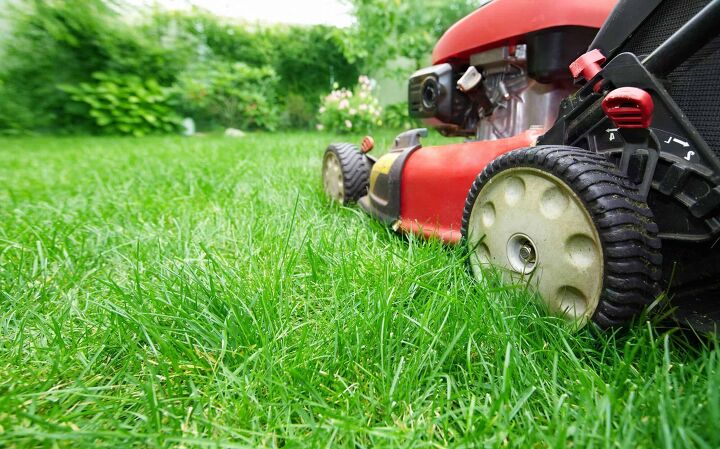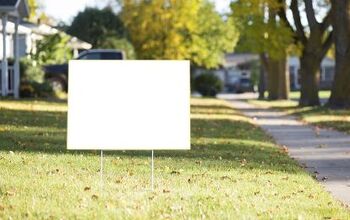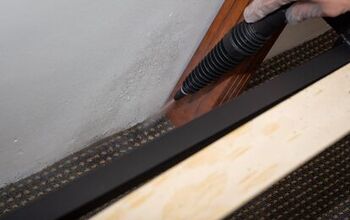Can I Put Larger Wheels On My Lawnmower?

When it comes to a lawnmower’s performance, most owners focus on the crucial components, such as the blades and the engine. However, your tires can make a considerable difference in your mowing capabilities, so it can sometimes help to adjust them accordingly. One change that might be beneficial is to put larger wheels on your lawnmower.
You can and should put larger wheels on your lawnmower. Larger tires will provide additional clearance, although you may have to make adjustments to the deck and blades. You may have to extend the axle for the new tires to fit. The process for installing larger wheels will depend on the type of mower you have and the size of the wheels. If you can’t do it yourself, consult with your local dealer.
Because there are so many variables that can go into this project, we will outline the different potential options for installing larger tires on your lawnmowers. We’ll also discuss the benefits and downsides that can come from a larger tire.
Do You Need a Mower Repair Service?
Get free, zero-commitment quotes from pro contractors near you.

Can You Install New Wheels On Your Lawnmower?
The short answer to this question is yes. However, it depends on a few things. Here is a breakdown of the different variables to consider before moving forward with this project.
Push vs. Riding Lawnmower
When changing the wheels on a mower, you have to consider both the terrain and your machine’s weight. For example, you don’t have to worry as much about the weight of a push mower, but it may be harder to get the new tire to fit. Riding mowers tend to have more wheel options, so it might be easier to buy a larger model than it would be for a push model.
Overall, you have to make sure that the new tires are rated for the type of mower you have since they are not interchangeable.
Wheel Size
Larger tires are going to be both taller and wider to accommodate more weight. Usually, this means that you’ll have to extend the axle to accommodate them. However, with push mowers, you may be able to find wheels that are relatively the same width so that you can install them on the same axle.
If you have a riding mower, you have to make sure that the new tires will fit the wheel’s clearance well. If not, you won’t be able to install them. While it might be possible to remove the well, it’s not recommended.
Deck Clearance
Installing larger tires on your lawnmower means raising its minimum height. On a push mower, this means that you might not be able to go low enough to cut the grass. On a riding lawnmower, you will have to adjust the cutting deck to compensate for the difference. If you like to keep your lawn thick, this may not pose a problem. However, if you prefer to cut extra-low, larger wheels might prevent you from doing so.
Pros and Cons of Having Larger Wheels on a Lawnmower
Before starting this project, you need to know the reason behind having larger wheels. Some of the benefits and downsides can include:
- Pro: Better Traction – Lawnmower tires are not necessarily all-terrain. In some cases, you might want to be able to drive over snow, or you might have a rocky and bumpy landscape. Larger wheels may offer improved traction control.
- Con: Reduced Turning – When the wheels are wider, it’s harder to make a 180-degree turn. Even if you have a zero-turn machine, bigger tires can make it impossible to move as tightly.
- Pro: Smoother Maneuvering – Usually, push lawnmowers can be hard to move around when they have small wheels. Adding larger ones to the rear gives you more adaptability and control when mowing the lawn.
- Con: Limited Cutting Options – Although you can adjust the cutting deck on both push and riding lawnmowers, larger wheels will raise the minimum height. As a result, you can’t cut your lawn as short as you may like.
- Con: Less Suction – With the cutting deck raised off the ground, the blades won’t be able to direct as much grass into your collection bag. However, if you prefer to use the clippings as mulch, this feature is actually beneficial.
How to Install Larger Wheels
There are a few ways to do this, and the method will depend on the wheel size you choose and whether it fits on the mower as-is. We’ll walk through the various options, starting with the easiest.
Method One: Changing a Tubed Tire
Usually, lawnmower tires are tubeless, meaning that they don’t have an inflation valve. So, to replace the tire on your lawnmower, you have to pull it off the rim by breaking the bead. However, if your mower has tubed wheels, you can replace the whole thing, including the rim. Here are the steps for a simple tire swap.
- Step One: Place the Tire on a Jack – A standard hydraulic jack is best for this job since you will be working on one tire at a time.
- Step Two: Remove the Bolts – You will need a socket wrench to take these off. Tubed tires usually have multiple bolts connecting them to the axle.
- Step Three: Install the New Tire – If the new model fits well, you just have to place it on the axle and tighten the bolts.
- Step Four: Repeat As Necessary – In some cases, you might want to replace two tires instead of four (i.e., the rear tires). Follow the same steps to change each one out.
Method Two: Changing a Tubeless Tire
- Step One: Put the Mower on a Jack – Again, a hydraulic jack is ideal.
- Step Two: Remove the Bolt and the Tire – Tubeless tires are often held in place by a single bolt.
- Step Three: Remove the Valve Stem – This stem is attached to the rim, rather than a tube. Removing the stem lets the air out and releases the pressure on the bead.
- Step Four: Break the Bead and Remove the Tire From the Rim – You can find out more about how to do that here.
- Step Five: Place the New Tire on the Rim – It helps to use detergent or some other kind of lubricant to get the wheel in place. You will also have to use a screwdriver or pry bar to get the rubber over the edge of the rim.
- Step Six: Wrap a Ratchet Strap Around the Tire – Doing this will make it easier to snap the beads in place, and it will prevent you from overfilling the tire.
- Step Seven: Reattach the Valve Stem and Inflate the Tire – Check the air pressure to ensure that it doesn’t exceed the manufacturer’s recommendations.
- Step Eight Reattach the Tire – Put it on the axle and bolt it in place.
Method Three: Extending the Wheel Axle
In some cases, the new tire may be too wide to fit on the old axle. This method requires metalworking and welding experience, so we don’t recommend attempting it if you don’t know what you’re doing.
If necessary, ask your local repair shop if they can take care of this for you. However, welding pieces to your axle could void any warranty on the mower, so some shops won’t do it.
Basically, you have to find a bolt that is the same width as the axle. You will have to cut off the head and weld the piece to the end of the axle. Once that’s done, you should be able to attach the tire and place one or two nuts to hold it securely. We recommend installing two nuts that screw in opposite directions to ensure that the tire doesn’t come loose while driving.
Again, don’t attempt this if you have no experience with cutting or welding metal, as it could be too dangerous.
Do You Need a Mower Repair Service?
Get free, zero-commitment quotes from pro contractors near you.

Related Questions
Do I have to install larger tires on the front and back?
In many cases, the rear tires can be larger than the front ones. However, you will have to recalibrate your cutting deck so that you’re not mowing at an angle.
Related Guides

We are a team of passionate homeowners, home improvement pros, and DIY enthusiasts who enjoy sharing home improvement, housekeeping, decorating, and more with other homeowners! Whether you're looking for a step-by-step guide on fixing an appliance or the cost of installing a fence, we've here to help.
More by Upgraded Home Team



























